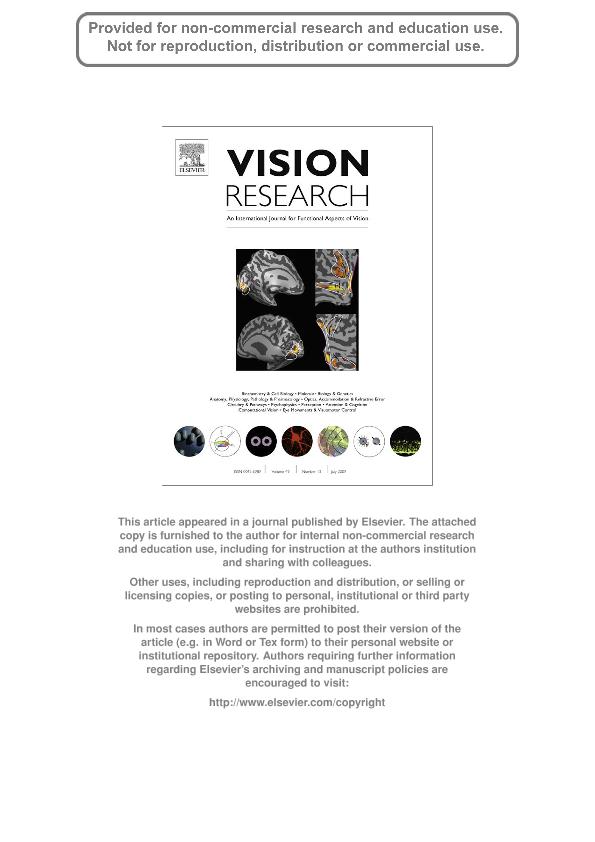Artículo
The effect of spatial layout on motion segmentation
Fecha de publicación:
07/2009
Editorial:
Pergamon-Elsevier Science Ltd
Revista:
Vision Research
ISSN:
0042-6989
Idioma:
Inglés
Tipo de recurso:
Artículo publicado
Clasificación temática:
Resumen
We present a series of experiments exploring the effect of the stimulus spatial configuration on speed discrimination and two different types of segmentation, for random dot patterns. In the first experiment, we find that parsing the image produces a decrease of speed discrimination thresholds such as was first shown by Verghese and Stone [Verghese, P., & Stone, L. (1997). Spatial layout affects speed discrimination threshold. Vision Research, 37(4), 397-406; Verghese, P., & Stone, L. S. (1996). Perceived visual speed constrained by image segmentation. Nature, 381, 161-163] for sinusoidal gratings. In the second experiment, we study how the spatial configuration affects the ability of a subject in localizing an illusory contour defined by two surfaces with different speeds. Results show that the speed difference necessary to localize the contour decreases as the stimulus patches are separated. The third experiment involves transparency. Our results show a little or null effect for this condition. We explain the first and second experiment in the framework of the model of Bravo and Watamaniuk [Bravo, M., & Watamaniuk, S. (1995). Evidence for two speed signals: a coarse local signal for segregation and a precise global signal for discrimination. Vision Research, 35(12), 1691-1697] who proposed that motion computation consists in, at least, two stages: a first computation of coarse local speeds followed by an integration stage. We propose that the more precise estimate of speed obtained from the integration stage is used to produce a new refined segmentation of the image perhaps, through a feedback loop. Our data suggest that this third stage would not apply to the processing of transparency.
Palabras clave:
INTEGRATION
,
MOTION
,
SEGMENTATION
,
SPEED DISCRIMINATION
,
TRANSPARENCY
Archivos asociados
Licencia
Identificadores
Colecciones
Articulos(ILAV)
Articulos de INST.DE INVESTIGACION EN LUZ, AMBIENTE Y VISION
Articulos de INST.DE INVESTIGACION EN LUZ, AMBIENTE Y VISION
Citación
Martín, Andrés; Barraza, Jose Fernando; Colombo, Elisa Margarita; The effect of spatial layout on motion segmentation; Pergamon-Elsevier Science Ltd; Vision Research; 49; 13; 7-2009; 1613-1619
Compartir
Altmétricas




